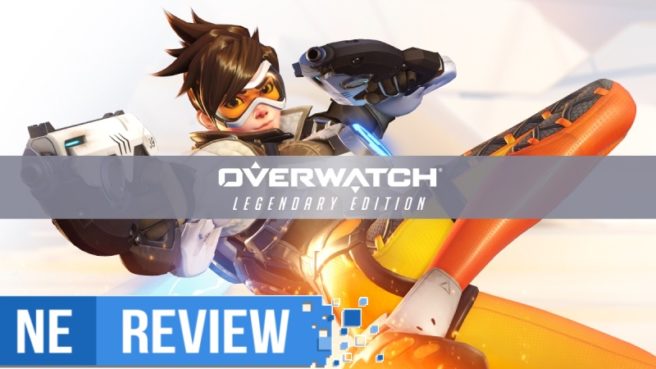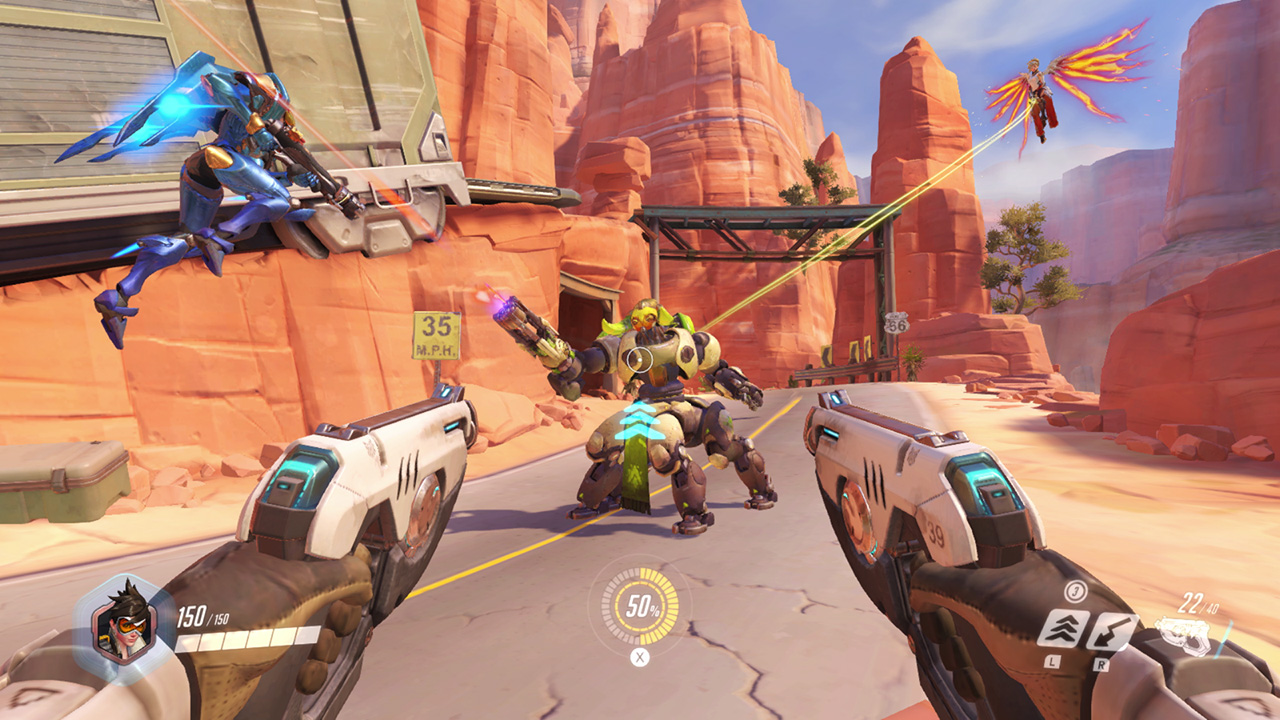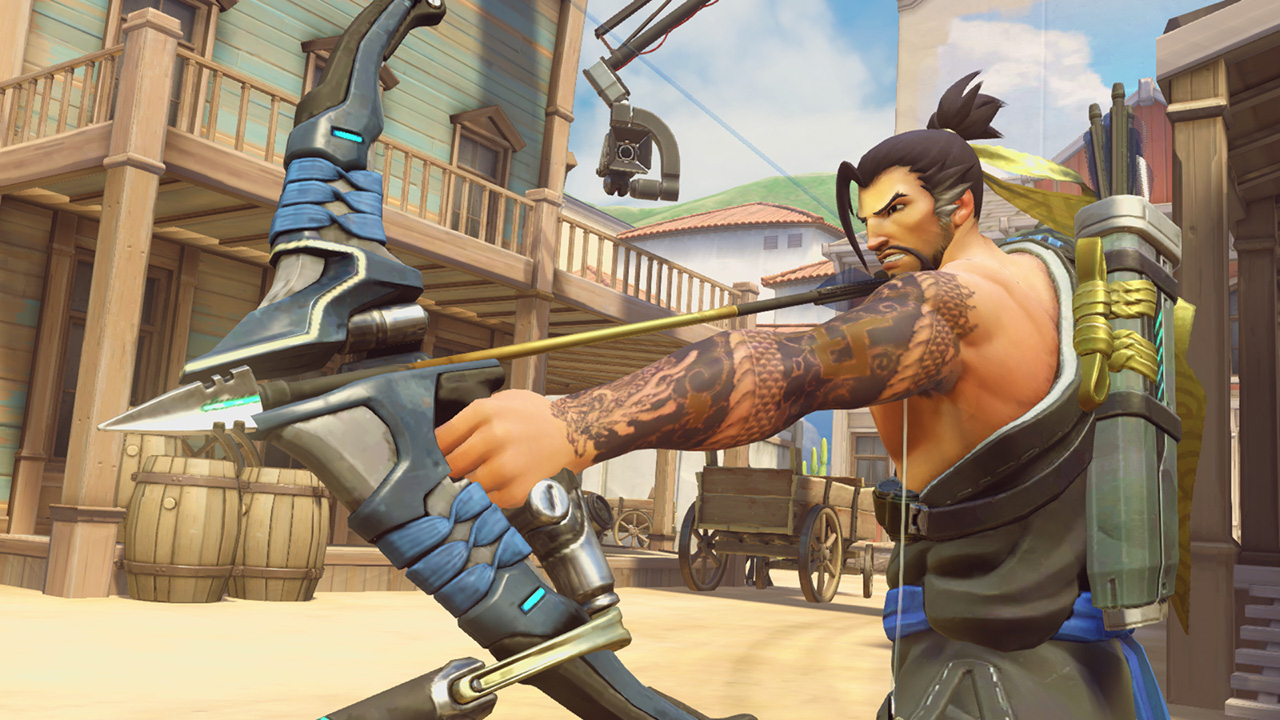[Review] Overwatch
System: Switch
Release date: October 15, 2019
Developer: Blizzard / Iron Galaxy Studios
Publisher: Blizzard
Overwatch took the world by storm when it released in 2016, and even now years later it has grown into a property worth billions of dollars. The Switch version sees its release in 2019 three years after its launch on PC and consoles, sporting newly featured gyro controls and the ability to make the experience portable. But as great as Overwatch is, are the sacrifices made to run on what is essentially a tablet worth it at the end of the day? Parity is key here, but Switch finds itself in a situation of the age old saying, “Just because you could, doesn’t necessarily mean you should.”
For those unfamiliar, Overwatch is a team-based shooter that puts a big emphasis on class, having players choose between Offense, Tank, and Support options. Up until recently a Defense category was also available, having the likes of Bastion, Junkrat, and Mei, but has mostly been absorbed under Offense for better clarity of roles and a chance for neglected characters to receive more exposure. A multitude of game modes from Quick Play, Competitive, Training (at a training facility and against AI), and Arcade (which serves as a more casual mode filled with tons of modes including some that rotate on a daily and weekly basis) give tons to choose from. They also have certain rewards that you can get on a weekly basis, such as loot boxes attained for winning an X amount of games and special sprays, emotes, and skins through special events throughout the year. Loot boxes, which Overwatch largely popularized, is your main way of gaining all the special contents the game has to offer, providing a plethora of highlights (the animations you see during the Play of the Game segments at the end of every match), sprays, voice lines, and more for your characters to customize them to your liking. Each Hero has his or her own set of skills that can provide a wide array of advantages in battle, though they can be easily as disadvantageous when heroes are chosen in a composition that simply does not work for them.
Overwatch has evolved so much since launch, and it’s now a game that’s more refined and tuned for strategic play. At first, you could have both your team and the enemy team all be Lucio and break it down like no one’s ever broken it down before. Then after a while you couldn’t have duplicates on your team, but you could have a team filled with all healers if you so choose. Now the game’s been tweaked enough – undoubtedly in favor a more competitive environment – where 2-2-2 has become the new standard, basically applying the rules of two tanks, two offense, and two support characters in every match. If you love the old school way of doing things, however, this is where Arcade mode comes in, giving you more freedom in how and what you play.
Maps are all unique, giving a sense of character and environmental storytelling in the way they are designed rather than serving as a backdrop for a field of players to play hide and go seek in (with the mandatory totaled car that may or may not be flipped and/or slightly submerged seen in just about every FPS ever). While walking around an area like Horizon Lunar Colony, you’ll find yourself looking at photos of Winston as a kid and other characters, with notes and little props like peanut butter, labs, a view of Earth with a large telescope, and more that show a former home where scientific advancements for both humans and animals alike was the aim until a rebellion caused a communication cutout and hysteria on the base. King’s Row showcases a place riddled with signs and graffiti of a protest against the Omnics – Zenyatta’s race – as they’re denied the same rights as humans, situated in London where Tracer, the postergirl for Overwatch, is from. While action from match to match can be frenetic as you aim to capture points and transport payloads, taking a moment to look around when things die down shows a ton of attention to detail that, even without having to look anything up or watching cinematic shorts, would explain themselves through the imagery and soul that embodies every location.
Maps are designed in a way that give four separate game types (some others are exclusive to certain types, however) and all are chosen at random – Assault, Escort, Control, or Hybrid maps that combine Assault and Escort types. These will be your main types of gameplay for majority of the modes, while other offerings like Elimination, Capture The Flag, and Deathmatch will have maps specifically tailored for those styles. Some are unique while others are inspired by existing maps, only tweaked and condensed for a more controlled experience. Due to the wide variety of maps and styles, characters are easily affected by these changes, so strategy in Overwatch also comes down to character choice and situational adjustments from point to point and composition to composition. It’s good to have multiple heroes under your belt – especially one for each class – to adapt to any situation instead of being a one-trick pony. Indoors, Pharah isn’t the best choice as she’s strongest in the air, and with little room to maneuver all it takes is a Soldier 76 to get you in his sights or a McCree to snipe better with a revolver than Widowmaker to ruin your day (take it from me, a Pharah main).
Overwatch for Switch keeps all content in place. It still contains over 30 characters, hundreds of unlockables, a multitude of game modes both fixed and dynamic, and even voice chat in-game. Resolution and rendering detail take a big hit, though this was to be expected. It can, however, become problematic in both TV and handheld mode especially the further away targets are and makes it hard to track where fire can come from time to time. Graphically the game is basically if Overwatch ran on just below low settings on PC, but surprisingly enough having played it on a business laptop from 2011 that sweats opening up Microsoft Word before, I still managed to hit 60 frames per second while basically looking on par with the Switch version. In contrast, Overwatch for Switch targets 30 FPS (emphasis on targets), and as someone who knows the ins and outs of the game, having all of the action quite literally cut in half made me feel like Quicksilver witnessing events in slow motion, and even something like Total Mayhem – where cooldowns are almost nonexistent and everyone’s health is doubled – felt like a normal match to me. When combining that with slight input delay and a nonsensical way of accessing communication features during battle including emotes, sprays, and voicelines, trying to help lead a team to victory felt like a struggle when it just simply doesn’t feel ergonomically correct.


